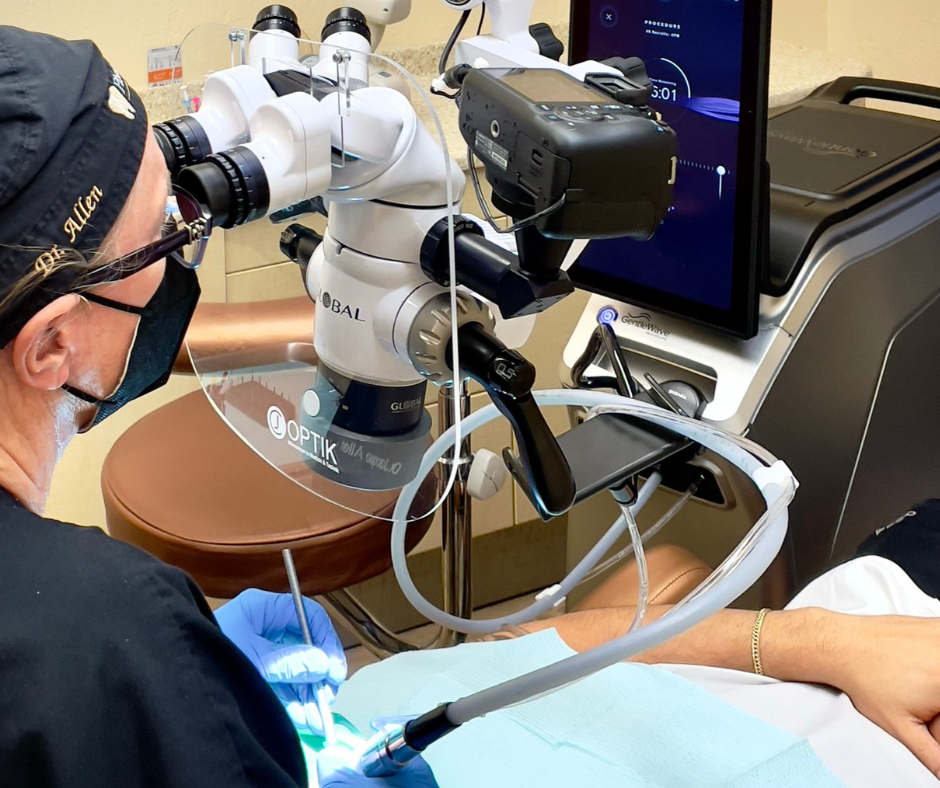Phoenix Endodontics Group treats patients using the most up-to-date technology. We do this because advances inevitably bring a better experience and better post-treatment outcomes for patients.
If you come to us for a root canal, we are likely to suggest the GentleWave Procedure. Let’s look at why we prefer GentleWave technology over traditional approaches to root canals.
GentleWave – Best Current Root Canal Therapy?
1. The GentleWave Procedure leverages fluid dynamics to flush root canals clean. A traditional root canal relies on cleaning with files and other special instruments. If a spot is missed, or a canal is hard to find, some infection can remain. GentleWave’s cascade of tiny imploding bubbles more completely removes biofilm, bacterial infection, and other material from the tooth.
2. The GentleWave Procedure reaches and shakes loose debris that even skilled endodontists miss. For complex root canal systems, treatment using the GentleWave Procedure provides extra assurance that all surfaces have been cleaned and disinfected.
3. The GentleWave Procedure is less invasive than traditional root canal therapy. For those with dental anxiety, root canals can be challenging. With GentleWave, there is less scraping and tapping in the canals and less pain, resulting in a less stressful experience.
4. The GentleWave Procedure requires less time for treatment and recovery. Our patients are pleased that their root canal therapy can be completed in one session most of the time! (They will still need to promptly see their general dentist for a crown to complete restoration.) They are also happy to find they are able to return to their usual activities more quickly than after a traditional root canal, too.
“Our implementation of the GentleWave Procedure for root canal therapy has been a win-win for our practice and our patients,” says Dr. Jacqueline S. Allen, an endodontist at Phoenix Endodontic Group. “We are able to provide a more comprehensive, less invasive treatment, and patients benefit from faster treatment and reduced recovery times with less pain and anxiety.”

